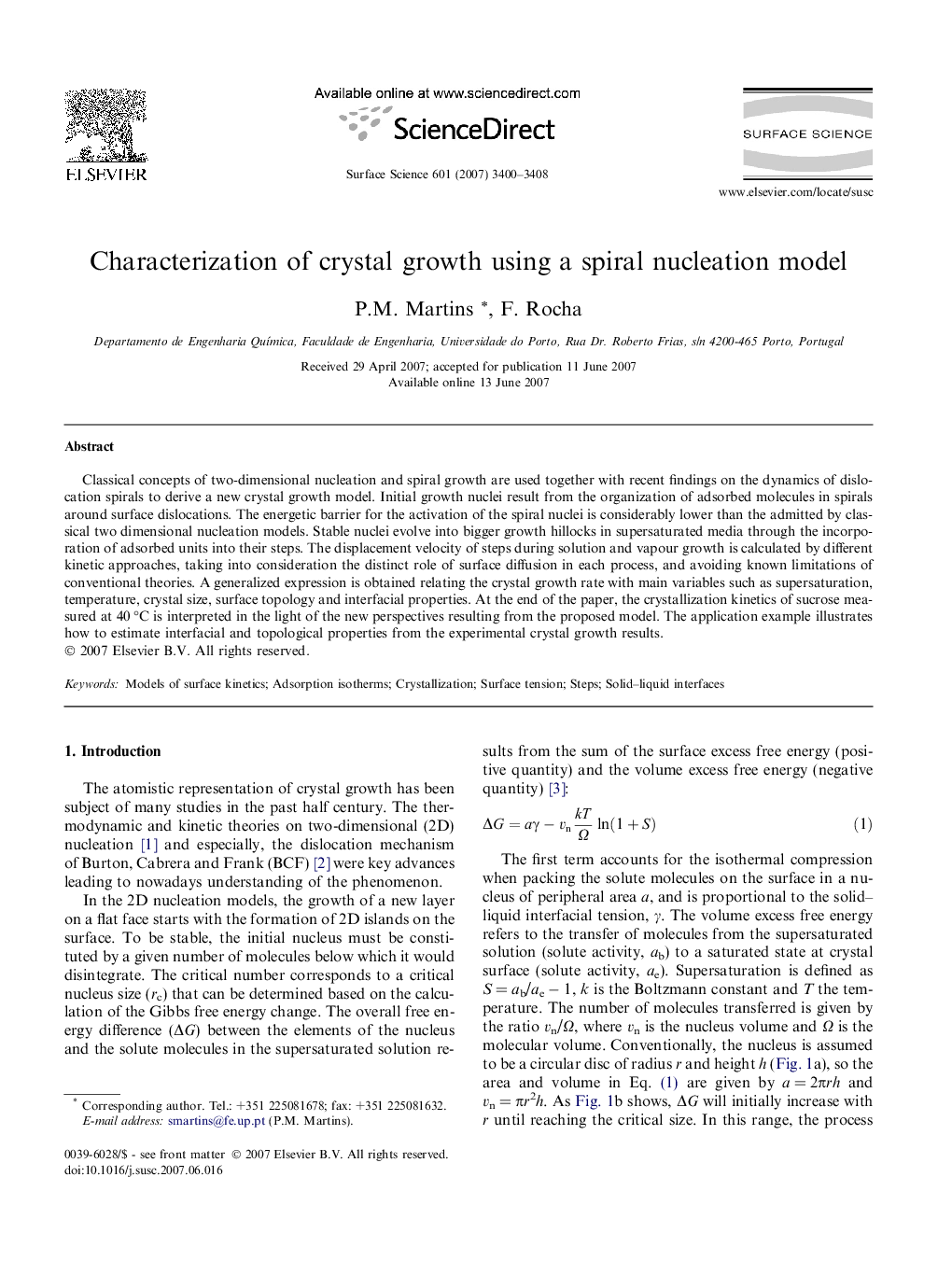| Article ID | Journal | Published Year | Pages | File Type |
|---|---|---|---|---|
| 5425867 | Surface Science | 2007 | 9 Pages |
Abstract
Classical concepts of two-dimensional nucleation and spiral growth are used together with recent findings on the dynamics of dislocation spirals to derive a new crystal growth model. Initial growth nuclei result from the organization of adsorbed molecules in spirals around surface dislocations. The energetic barrier for the activation of the spiral nuclei is considerably lower than the admitted by classical two dimensional nucleation models. Stable nuclei evolve into bigger growth hillocks in supersaturated media through the incorporation of adsorbed units into their steps. The displacement velocity of steps during solution and vapour growth is calculated by different kinetic approaches, taking into consideration the distinct role of surface diffusion in each process, and avoiding known limitations of conventional theories. A generalized expression is obtained relating the crystal growth rate with main variables such as supersaturation, temperature, crystal size, surface topology and interfacial properties. At the end of the paper, the crystallization kinetics of sucrose measured at 40 °C is interpreted in the light of the new perspectives resulting from the proposed model. The application example illustrates how to estimate interfacial and topological properties from the experimental crystal growth results.
Keywords
Related Topics
Physical Sciences and Engineering
Chemistry
Physical and Theoretical Chemistry
Authors
P.M. Martins, F. Rocha,
